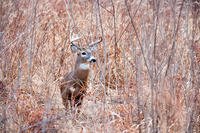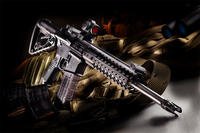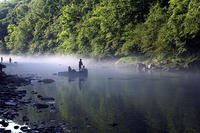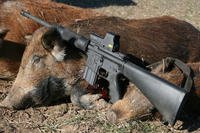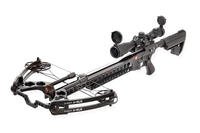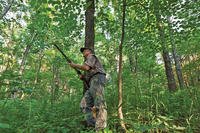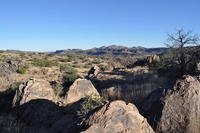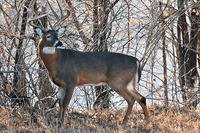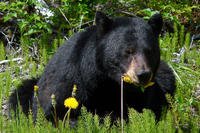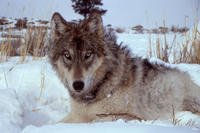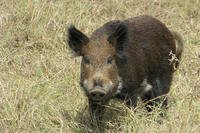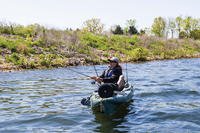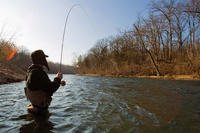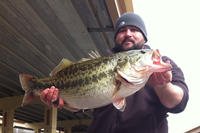You’ve finally saved enough cash to go on that ultimate deer hunt. So now what? It’s only January, but it’s time to get serious about making plans.
by David Hart
You've eaten peanut butter and jelly sandwiches for a year. You've worked all the overtime you can get. You've pinched pennies here and squeezed dollars there, all for the dream of chasing monster whitetails in some mythical place you've seen on television. You've finally saved enough cash to go on that ultimate deer hunt. So now what? It's only January, but it's time to get serious about making plans.
"I start planning for next season as soon as this year's hunting season is over," says Steve Stoltz, a member of Knight & Hale's Ultimate Hunting Team and a long-time hunting videographer. "The best outfitters fill up quickly, and it takes a lot of work to find a good area and a good outfitter."
Stoltz has been to more states than he can recall, so he's got a pretty good idea of how to find a qualified outfitter in a place that offers a real chance at a trophy-class whitetail. Stoltz starts by selecting a state or province that offers high odds of tagging a big buck.
Choose An Area
Places such as Texas, Kansas, Missouri, Iowa and Saskatchewan are top destinations for traveling hunters for good reason. Take a look at the Boone And Crockett Club's map of trophy whitetails and you'll see sections of those states awash in red, the mark of an area that has surrendered a higher number of book bucks than surrounding regions. Hunting such high-percentage areas automatically increases your chances of crossing paths with a monster whitetail.
However, Stoltz warns hunters not to be taken by those mythical areas that make all the headlines. Sure, places such as Kansas' Unit 16 in the south-central region of the state have a well-earned reputation for giving up some bruiser bucks, but virtually the entire state has some really good deer. Consider this: The top 21 typical whitetails taken with a rifle in Kansas were killed in 16 different counties. Seventeen counties accounted for the 20 best bow kills. Iowa, another state with a solid record-book reputation, is similar to Kansas. Although most of the media attention is focused on southeastern Iowa, plenty of monster whitetails come from all over the state. In fact, the top 20 bow kills for 2004 and 2005 were taken in 18 different counties, and the top 32 bucks taken with a muzzleloader during those same two seasons came from 25 different counties.
"I spent a week in Pike County, Ill., a place that has produced some real whoppers in the past, trying to film a hunt," Stoltz recalls. "But the big deer just weren't there. By chance, I ran into an outfitter from southeastern Illinois, and he invited us down for a few days.
"It was incredible. I was surprised that the area had so many big deer, even though it's never been featured on a television show or in some national magazine."
When he's researching a deer hunt for himself or for someone else who plans on pulling the trigger, Stoltz will call wildlife biologists to discuss trophy potential for a specific area. He asks about hunting pressure, deer densities, approximate buck-to-doe ratios, the rut schedule and the overall potential for at least seeing a big buck. He'll also do some research on the habitat itself. Stoltz wants to know the primary food sources as well as the general look of the land. Is it heavily forested, a mix of open prairie and wooded draws and creeks, or void of any trees? Not only will those answers help him prepare for the hunt mentally, but knowing that information gets him fired up about the upcoming season — despite the fact that he just wrapped up the previous one.
Roll The Dice
Many of the top trophy whitetail states have such fantastic hunting because they limit the number of licenses they sell. Less pressure usually translates to older bucks. While resident hunters in states such as Kansas and Iowa are virtually guaranteed a tag, non-residents aren't. That means that in order to get in, you have to fill out some paperwork, write a check, send it in and wait. Some states, Iowa for example, offer a preference-point system that allows unsuccessful hunters to accumulate "points" each time they fail to draw a tag. The more points you have, the better your chances of drawing the next season. Eventually you'll get in. So even if you can't hunt this fall, it's not a bad idea to at least start putting some preference points in the bank.
Most states set application deadlines in late spring or early summer, so you have plenty of time to take care of the paperwork. However, don't put it off too long. Those deadlines have a way of sneaking up on you. In a few states, licensed outfitters are given a fixed number of permits, which automatically removes the uncertainty that accompanies the general license lottery. Those guaranteed tags might cost you more, but they certainly make planning a hunt a good bit easier.
Book It Now
If you plan to hunt next fall, you'd better start lining up an outfitter right away. The good ones fill up fast. Even Stoltz doesn't get in with the best outfits for the upcoming season because they are booked a year, even two or three, in advance.
So how do you find a reputable guide? The recommendation of a friend is worth more than perhaps anything, but Stoltz will poke around the Internet and even watch television shows that profile a region or a specific outfitter. Then he'll contact the outfitter and ask for a current list of references. He'll call successful and unsuccessful hunters and ask them about their experience with the outfit. Even if they didn't tag a monster buck, they should at least be satisfied with the camp itself and the effort put forth by the outfitter and his guides. Of course, if an outfitter gives you only a limited selection of references, especially if they were all successful, he might be hiding something.
"I like to spend some time looking at outfitter Web sites. What's the quality of the deer their clients are taking? An up-to-date Web site with lots of good information is a decent gauge of how serious that outfitter is about his hunting business," Stoltz notes. "Make sure the photos are current. If the deer were all taken five or ten years ago, the place may be burned out. Do they have trophy standards, or can their hunters shoot the first legal buck they see? I want to hunt an area where the bucks have a chance to grow old."
Stoltz also asks lots of questions of the outfitter himself. How much land does the outfitter hunt, and how many hunters does he run through camp in a typical season? More land is always better, but the hunter-to-acres ratio is a good indication of overall hunting pressure. What's the hunting style? Stoltz won't hunt over bait, which is the main reason he has never hunted Saskatchewan. Baiting is not only legal in Saskatchewan, but practiced by virtually every deer camp in the province. Can hunters move if they aren't happy where they've been placed? A couple of days in the same stand can get old in a hurry. What exactly is included in the price? What isn't? Some outfitters will pick you up at the airport at no extra charge; some won't.
"A good outfitter should be accommodating, but hunters have to have at least some faith in their guides. If my guide insists that I stay in my stand all day because the deer are likely to move all day, I'm going to do what he says," adds Stoltz. "On the other hand, if I've sat in the same stand for three days without seeing so much as a spike, I want to have the freedom to move to a new spot."
Prime Time
Stoltz is a hardcore bowhunter, but he won't hesitate to pick up a rifle if the situation dictates it. For him, hunting deer with archery tackle not only increases the challenge as well as the reward, it gives him first crack at some unpressured bucks. That's important.
"If I had to choose, I'd hunt the first days of the season before the bucks get pressured by other hunters," says Stoltz. "They will still be on their normal patterns and they are more likely to move during daylight hours. On the other hand, the outfitter might have enough land that stands don't get any pressure prior to your hunt. If that's the case, I'll take whatever is available. I would also like to hunt the four or five days prior to the rut when bucks are really moving in search of does."
Of course, even the best outfitter in the choicest territory can only put you in the right situation. It's up to you to hunt hard, stay focused and make every opportunity count. Remember all the sacrifices that you made to go on that dream hunt.
Sidebars:
What About Booking Agents?
Don't have time to do all the research? Hire a booking agent, which is basically a travel agent for hunters. In many cases, agents have been to the places they recommend and they know the various rules and regulations, as well as the protocol for applying for tags.
In fact, the best booking agents won't send you somewhere they haven't checked out themselves. Jason Berger, a consultant for Cabela's Outdoor Adventures, said he also relies on recommendations of dedicated Cabela's customers.
"We often rely on customer recommendations," says Berger. "When we hear good things about an outfitter from three or four of our regular clients, you can bet we are going to check them out. We'll send someone to serve as our guinea pig to see if the outfitter is worthy of our recommendation, and if he is, we'll add him to our list of hunts we offer."
Contrary to popular belief, booking agents don't cost any additional money on top of the outfitter's fees. Instead, the outfitter pays the booking agent a fee for finding clients.
"Instead of putting their money into advertising in magazines and at sportsmen's shows, they use our services to help find clients," notes Berger.
Some booking agents, such as Cabela's, will provide door-to-door service by booking air travel and rental cars and taking care of other incidental items for you.
Go It Alone?
The services of a guide aren't mandatory, at least not in the Lower 48. Plenty of the top whitetail states have generous amounts of public land, and states such as Kansas, Nebraska and South Dakota have a private-land lease program that allows hunters to roam across quality private farmland at no cost. Some land is far better than others, and finding the best deer country can involve countless phone calls, hours on the Internet and plenty of sleepless nights fretting about your decisions. Taking a trip halfway across the country without doing some legwork is a gamble — a huge gamble that has pretty low odds of success. For some hunters, however, the notion of tackling all those challenges is as rewarding as pulling the trigger on their first Booner.
A trip to Saskatchewan will cost you not only the money for a license but also the services of an outfitter, like it or not. All U.S. hunters are required to use an outfitter, so keep that in mind. Also, if you've settled on a deer hunt in Canada, you'd better think about getting a passport right now if you don't already have one. At one time, a driver's license was good enough to get across the border and back, but now, a passport is required. Turnaround times are growing, and getting a passport can take as long as four months. Start the application process now.
If you do choose to do a self-guided hunt in the States, it's critical to line up all the essentials before you show up in some strange town in some distant state. Book hotel rooms and find restaurants, sporting-goods stores, even game processors and auto repair shops long before you take off on the hunt of a lifetime.
